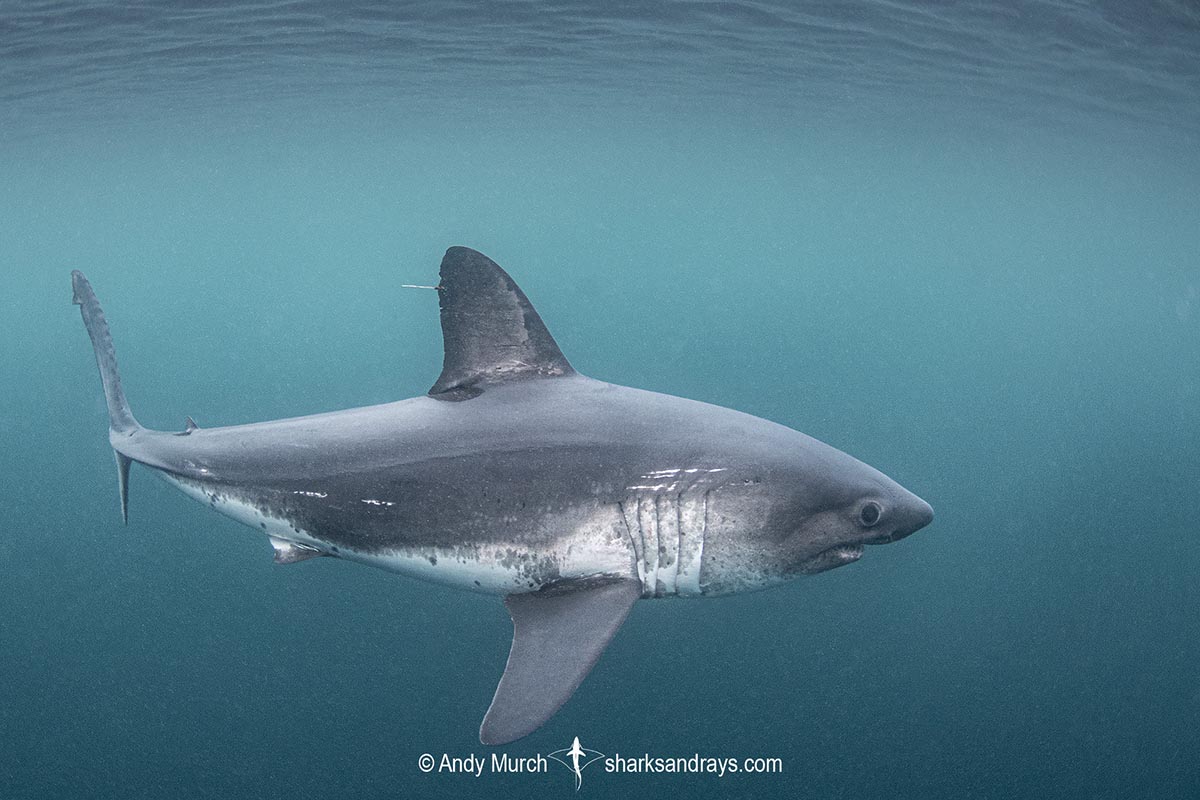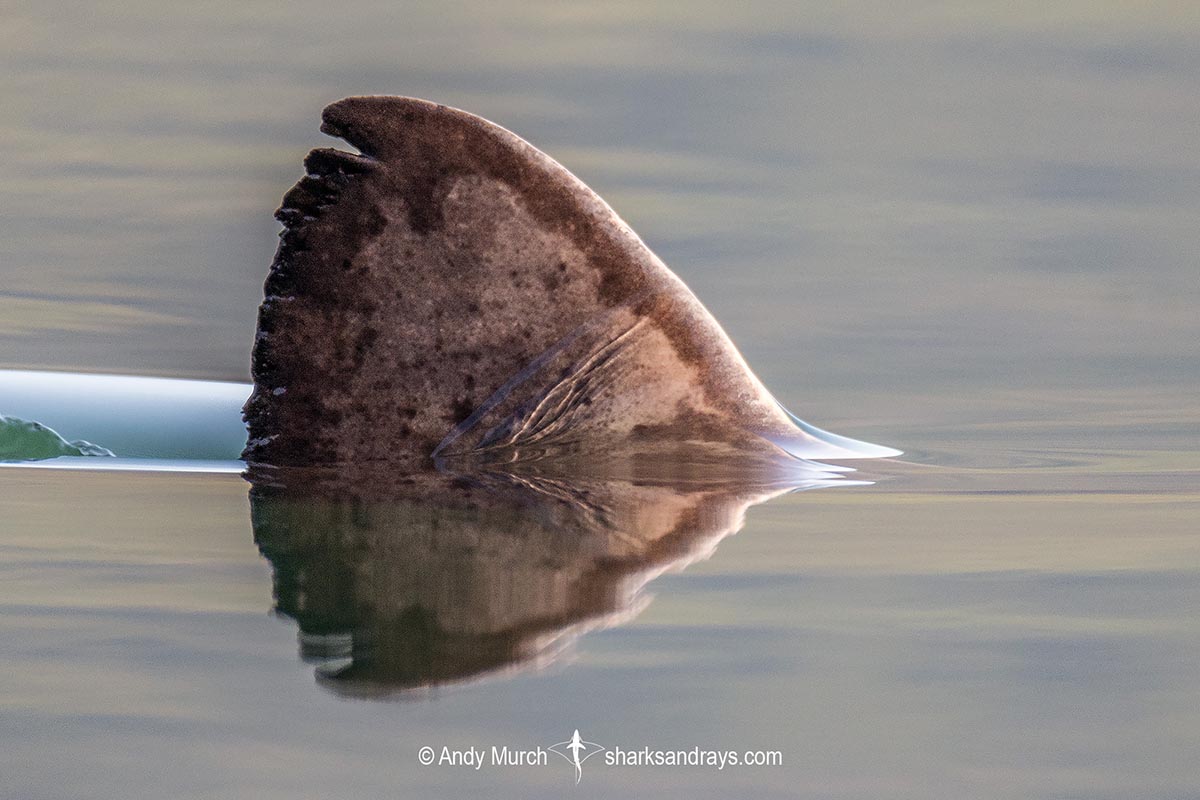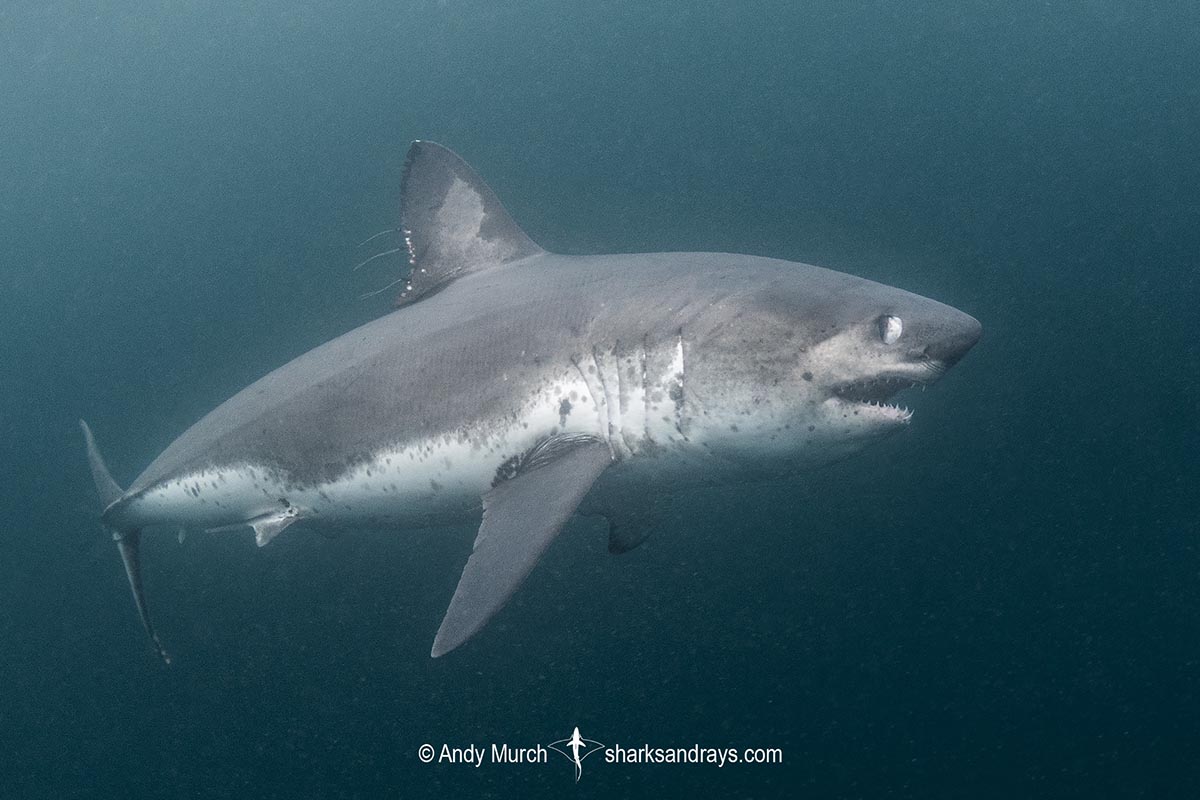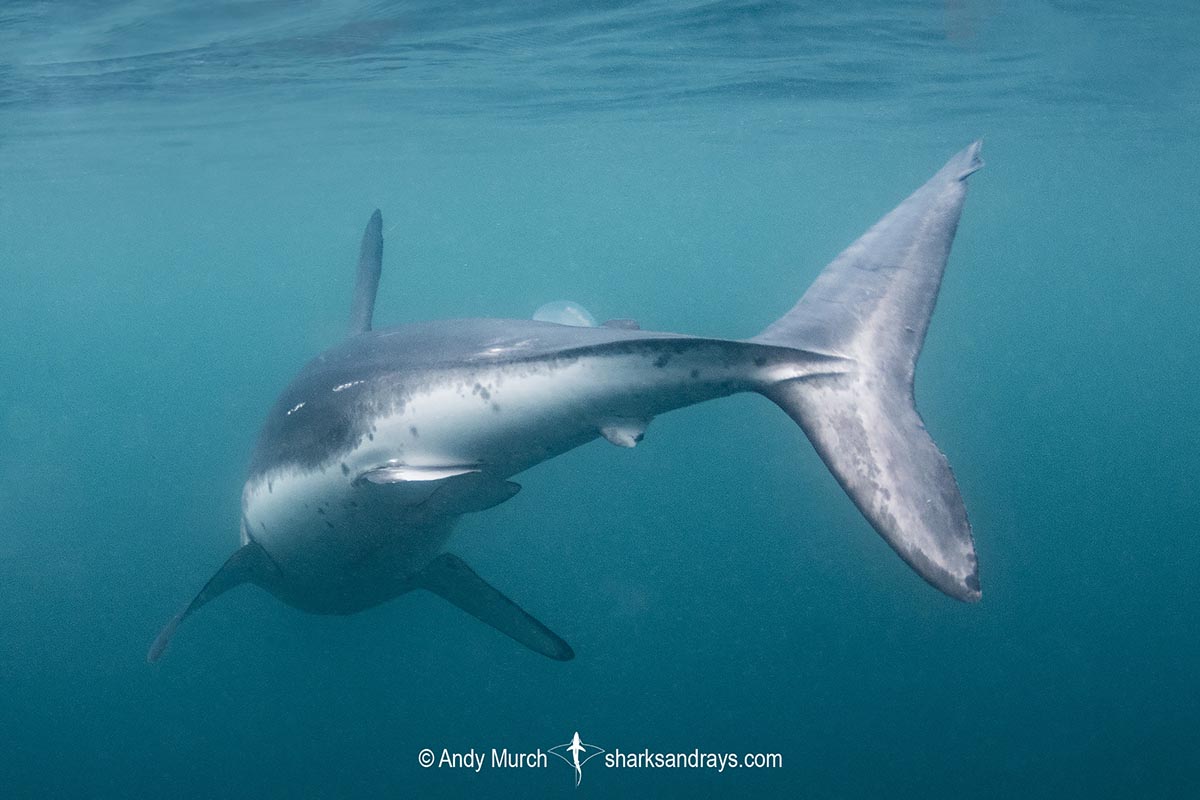Common name(s)
Salmon Shark.
Binomial
Lamna ditropis.
Synonyms
Isurus nasus.
Identification
A stocky, powerfully built shark with a very short, conical snout. First dorsal fin origin over or anterior to pectoral fin insertion. First dorsal apex rounded. Second dorsal fin very small; same size as anal fin. Prominent lateral keels on caudal peduncle support a large, powerful falcate, caudal fin. Shorter secondary caudal keels positioned below main keel. Upper caudal lobe slightly longer than lower.
Dorsal coloration slate grey, greyish brown, or black. Ventral surface white with irregular dark spots and blotches. Dorsal coloration may stop above or below the mouth.
Size
Maximum length 305cm. Size at birth 65-80cm.

Conservation Status
LEAST CONCERN
The salmon shark is taken in target and bycatch coastal and pelagic commercial longline, purse seine, and gillnet fisheries, and is often retained for its meat as well as fins.
Although the salmon shark has small litters and a long reproductive cycle, catch data from 1990-2000 era indicated the population was probably stable. Not much data has been collected since but anecdotal accounts from fishermen in the Gulf of Alaska suggest that declines may have occurred.

Habitat
Cold, temperate, and sub-tropical oceanic and inshore environments. Found in 2-24ºC water but prefers water between 8-16ºC. From the surface to at least 1864m.
Distribution
Confined to the North Pacific Ocean. Males more common in the northwest, females in the northeast.
In the northeast Pacific, salmon sharks range from the Bering Sea to Baja California.
Reproduction
An aplacental viviparous species with oophagous (egg eating) embryos. 3-4 embryos per litter.
Diet
Consumes a wide variety of bony fishes. Various salmon species constitute the bulk of the salmon shark’s diet when available.
Behavior
In North America, salmon sharks move into fjords from June to September to feed on spawning salmon, returning offshore in the winter.
In the northwestern Pacific, salmon sharks migrate south from the Kuril Islands to Japan in the winter.
In Prince William Sound, salmon sharks are frequently seen during the summer, slowly swimming in large circles at or near the surface with the tops of their dorsal fins exposed. The purpose of this behavior is unclear but it may be related to hunting for salmon.
Reaction to divers
Extremely shy. Difficult to approach on scuba or snorkel until fixated on a trawled bait, at which point the salmon shark becomes much bolder, making very close passes in its pursuit of the bait.
Diving logistics
The Gulf of Alaska is the only area where salmon sharks can be reliably encountered. Between June and August salmon sharks congregate in one spot dubbed ‘Shark Alley’ in Port Fidalgo. At this spot, snorkelers can observe the sharks lazily swimming in circles at the surface. Sometimes they are too shy to approach but the bolder ones will approach small boats if a shark wrangler attracts them with a small fish tied to a fishing line (without a hook). Once a shark takes interest, the snorkelers slip into the water but remain next to the skiff to avoid spooking the shark as it approaches.
Big Fish Expeditions runs a Salmon Shark Snorkeling Expedition each June/July.
Similar species
Shortfin Mako Shark Distinguished by more slender body, more acutely pointed snout, and lack of second caudal keel.
Great White Shark Distinguished by pointed first dorsal fin, lack of secondary caudal keel, and broadly triangular teeth with serrated edges.











